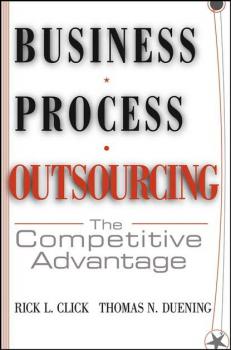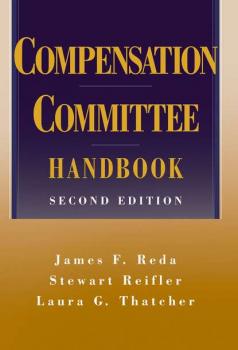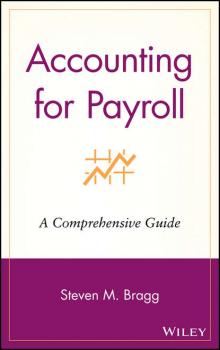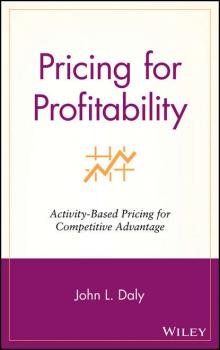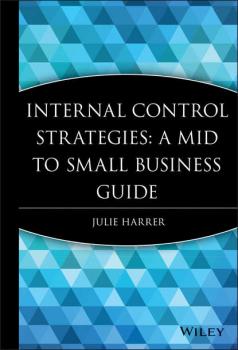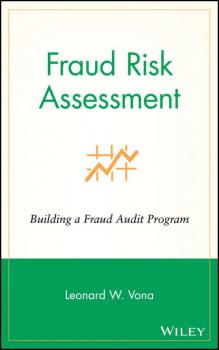ТОП просматриваемых книг сайта:
Бухучет, налогообложение, аудит
Различные книги в жанре Бухучет, налогообложение, аудит, доступные для чтения и скачиванияАннотация
Business Process Outsourcing (BPO) is becoming the new revolution as company's of all sizes are seeking to take advantage of this source of competitive advantage. This book provides a step-by-step approach to understanding the application of Business Process Outsourcing, assessing the BPO opportunity in the company, and then managing the transition to BPO. It serves as a guide to implementing BPO and as a reference source to solving the variety of issues that may arise during a BPO initiative. Each chapter features a case study, insight from a practitioner, focus on how BPO affects people, and ethical considerations. * Discusses both the how and why of business process outsourcing with a straightforward «how to» approach. * Provides managers with the tools to analyse the BPO opportunities for their own firms, as well as techniques and strategies for managing a BPO initiative. * Empowers businesses of all sizes to take advantage of this all-encompassing business revolution.
Аннотация
This Second Edition provides a comprehensive review of the issues facing compensation committees and covers functional issues such as organising, planning, and best practice tips. Compliance advice on the implications of Sarbanes-Oxley and other regulations is addressed along with new requirements on disclosures of financial transactions involving management and principal stockholders.
Аннотация
A one-stop resource for setting up or improving an existing payroll system! The most comprehensive resource available on the subject, Accounting for Payroll: A Comprehensive Guide provides up-to-date information to enable users to handle payroll accounting in the most cost-effective manner. From creating a system from scratch to setting up a payroll department to record-keeping and journal entries, Accounting for Payroll provides the most authoritative information on the entire payroll process. Ideal for anyone new to the payroll system or as a skill-honing tool for those already immersed in the field, this hands-on reference provides step-by-step instructions for setting up a well-organized payroll system or improving an existing one.
Аннотация
Everyone jokes about the 20/20 hindsight of cost management. In Life-Cycle Costing, Jan Emblemsvag proposes to do something about it. Here's a new approach to life cycle costing that brings activity-based costing, risk, and uncertainty into the forefront. You'll focus on future costs and learn how you can perform any type of cost management activity better than before by introducing uncertainty into models and exploiting them to the max. Order your copy today!
Аннотация
Provides the tool necessary to determine and evaluate the effectiveness of a corporation's management of cash. Examines how operational activities can affect cash flow management. Shows how effective cash flow management can improve corporate performance and increase shareholder value. Provides an overview of cash management techniques.
Аннотация
Discusses issues not covered in other books, including best practices budgeting, closing the books, and control systems. Includes interest factor tables, sample forms for data entry, sample report formats for internal as well as external reports. Features flowcharts and checklists for key control points in the major accounting processes.
Аннотация
Three things can happen when establishing a product price. A price set too high is a lost sale that could have been profitable at a lower price. A price set too low is rewarded with unprofitable work. Only when a price is set appropriately does a company make both a sale and a profit. Just as activity-based costing and activity-based management revolutionized the cost accounting world, activity-based pricing will bring a disciplined approach to developing pricing. Activity-based pricing examines the relationships between price, cost and sales volume and how this relationship effects profitability. Pricing for Profitability joins the disciplines of marketing, economics, business strategy, engineering and cost accounting to achieve maximum profitability.
Аннотация
Unified Financial Analysis arrives at the right time, in the midst of the current financial crisis where the call for better and more efficient financial control cannot be overstated. The book argues that from a technical perspective, there is no need for more, but for better and more efficiently organized information. The title demonstrates that it is possible with a single but well organized set of information and algorithms to derive all types of financial analysis. This reaches far beyond classical risk and return or profitability management, spanning all risk categories, all valuation techniques (local GAAP, IFRS, full mark-to-market and so on) and static, historic and dynamic analysis, just to name the most important dimensions. The dedication of a complete section to dynamic analysis, which is based on a going concern view, is unique, contrasting with the static, liquidation-based view prevalent today in banks. The commonly applied arbitrage-free paradigm, which is too narrow, is expanded to real world market models. The title starts with a brief history of the evolution of financial analysis to create the current industry structure, with the organisation of many banks following a strict silo structure, and finishes with suggestions for the way forward from the current financial turmoil. Throughout the book, the authors advocate the adoption of a 'unified financial language' that could also be the basis for a new regulatory approach. They argue that such a language is indispensable, if the next regulatory wave – which is surely to come – should not end in an expensive regulatory chaos. Unified Financial Analysis will be of value to CEOs and CFOs in banking and insurance, risk and asset and liability managers, regulators and compliance officers, students of Finance or Economics, or anyone with a stake in the finance industry.
Аннотация
Praise for Internal Control Strategies A Mid to Small Business Guide «Internal Control Strategies is an excellent field guide for the implementation and maintenance of efficient and effective internal control systems. The book provides a practical approach to interpreting guidance from oversight agencies and integrating it with industry practice in a real-world environment. This handbook is an essential tool for managers and professionals going through the day-to-day struggle of managing auditor expectations and permitting business to proceed in the most efficient manner.» -Michael Rodriguez, former senior manager of finance, Qualcomm Incorporated «Internal Control Strategies is the clearest path forward for middle-market SEC registrants and their independent registered public accounting firms as they streamline the SOX 404 compliance process in 2008 and beyond.» -Stephen G. Austin, MBA, CPA, Managing Firm Partner,Swenson Advisors, LLP, Regional PCAOB Accounting Firm «Clearly written and practical, Internal Control Strategies is a must-read for every chief audit, finance, or compliance executive.» -Jeff Miller, Partner-in-Charge, Business Risk Services,Squar, Milner, Peterson, Miranda & Williamson, LLP «As a CFO of small to mid-sized publicly traded and privately held companies, one is usually faced with the challenge of developing and implementing the right levels of internal controls and compliance within the restrictions of limited financial and human resources. Internal Control Strategies presents the relevant topics in a clear and concise manner, allowing the reader to understand the internal control framework and specific underlying requirements quickly. The author's vast experience with SOX compliance ensures a targeted and pragmatic approach for the successful implementation of internal controls. Her recommendations are 'to the point' and eliminate some of the guesswork we all have experienced while working towards SOX compliance.» -Robert S. Stefanovich, Chief Financial Officer, Novalar Pharmaceuticals, Inc. The SEC requires all publicly traded companies to attest to theeffectiveness of their internal controls. Is your business ready? Internal Control Strategies: A Mid to Small Business Guide clearly explains the latest PCAOB, SEC, and COSO guidance, providing you with an effective tool and reference guide for successful implementation of sections 302 and 404 of the Sarbanes-Oxley Act. Extremely knowledgeable and insightful, author Julie Harrer brings practical clarity to this complex topic, leading you step by step in addressing the challenges associated in bringing your business in compliance with SOX.
Аннотация
Providing a comprehensive framework for building an effective fraud prevention model, Fraud Risk Assessment: Building a Fraud Audit Program presents a readable overview for developing fraud audit procedures and building controls that successfully minimize fraud. An invaluable reference for auditors, fraud examiners, investigators, CFOs, controllers, corporate attorneys, and accountants, this book helps business leaders respond to the risk of asset misappropriation fraud and uncover fraud in core business systems.

